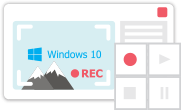動画編集
家族のグリーティングカードから会社のプレゼンテーションまでのどんな複雑性でも動画を作成できるように、動画編集 フリーウェアを使用しています。 カットをはじめて、動画ファイルの併合、視覚効果や効果音やフィルターや画像修正などの適用、適当なサウンドトラックの追加、スライドショーを作成できます 。動画がプロフェツショナルに見えるように、クロマキーおよび詳細設定を使用してください。 全ての人気の動画形式/音声フォーマットをサポートしています。
ビデオ変換器
このプログラムは他のフォーマットにビデオを変換することに志向されます。人気のビデオフォーマットの大半をサポートしています。(読込みと保存)その上、プログラムは特定のマルチメディア装置で、例えばiPhone、 Microsoft ZuneまたはArchos、再生するためにビデオを変換するタスクを大幅な簡素化します。プログラムは非常に簡単で使用するし、モダンインターフェースがあるし、必要なビデオ処理の機能があります。
オーディオ変換器
オーディオ変換器は他のフォーマットにオーディオファイルを変換します。基本的なオーディオフォーマットとコーデックをサポートしています。プログラムはプレイリストとメタタグを管理し、ビデオファイルからオーディオを抜き出して、パソコンでどんなフォーマットでもこのトラックを保存させます。
オーディオCDグラバ
このオーディオツールはオーディオトラックをグラブし、ユーザーのパソコンでどんなフォーマットでも保存するように使えます。人気のビデオフォーマットとコーデックの大半をサポートしています。プログラムはまた自動のファイルのリネームし、メタタグを更新のためにFreeDBからトラックの詳細を抜き出すことができます。
動画編集
ビデオ変換器
オーディオ変換器
オーディオCDグラバー

多機能性
1つのビデオソフトウェアのスイートではマルチメディア処理ツールの広い配列があります。

高速度
シングルコアやマルチコアのCPUに最適化した高品質と高速なアルゴリズムを使用します。

費用を負担できること
VSDCはWindows OSベースのPCとラップトップに無料でダウンロードできます。
- Amy Shao 公開 2025年11月19日 待望のVSDC 10.2アップデート:ホビイストからプロまで、すべてのユーザーを支援するために設計された...
- こんにちは、シアトル在住の旅行ビデオグラファー、マティア・ワートンです。3年間も、動画に醜い透かし(ウォーターマーク)を入れてくる編集ソフトに悩まされてきました...
- published Amy Shao 6/10/25 待ちに待った新しくてユニークなアップデートがついに登場!これは単なるバージョンアップではありません...
- このホリデーシーズンは、VSDC Video Editorの最新アップデートと共に新しい始まりを迎えましょう!皆様のフィードバックを受けて、最も愛されているツー...
Editor Scenes
Within the VSDC Video Editor, a scene functions as an integral component of a project. A single project can contain multiple scenes, enhancing the organization and structure of the content. When a new project is initiated, a scene is automatically created. Its position can be located in the Objects/Projects Explorer window.
To incorporate additional scenes or modify existing ones, simply right-click on the scene's name in the Projects Explorer window and select the desired option. Another way is to navigate to the Scenes tab on the Ribbon command bar: the same options are located there. The following set is available:
- New scene: this option allows you to add a new scene to your project. It's important to note that the new scene will appear in the Projects Explorer window.
- Load scene: this feature enables you to load a scene into your project that you have previously saved on your PC in the .vscn format.
- Save scene as...: this allows you to save the current scene on your computer in the .vscn format. This option is essential if you wish to transfer the scene to a different project.
- Pack scene...: this option lets you package the scene along with all the resources added to it and save it on your PC in the .vscn format. This is suitable if you plan to move the scene to another computer and continue working on it in VSDC. It's also useful if you're deleting media resources from your PC but want to keep them in the scene for future work.
- Remove scene: this allows you to delete the scene selected in the Projects Explorer window.
- Remove all scenes: This option enables you to delete all scenes in the Projects Explorer window.
- Move up: this feature allows you to move the selected scene in the Projects Explorer window up one level.
- Preview scene: this allows you to start a preview of the scene either in a separate window (the Preview Scene option) or in the preview window (the Play Scene option).
For even faster access to scene options, you can utilize hotkeys.
Scene objects
Every scene within the project has the capacity to accommodate an extensive array of resources, including standard video, audio, shapes, video effects, and audio effects. To facilitate seamless navigation through the scene's objects, it is advisable to utilize the Objects Explorer window. Positioned at the top of this window, it is a user-friendly search field, allowing for quick and efficient object location. Should the need arise to modify any specific object, a simple right-click on it unveils a menu with relevant options.
Scene properties
To configure the properties of a scene, click on its name in the Projects Explorer window. Automatically, on the right side of the editor, Properties window will display the parameters that can be modified:
- Scene settings: this section allows you to modify the scene's title, add a description, and control its visibility using the Enabled option. By default, Enabled is set to Yes. Switching it to No will omit the scene from the final project export.
- Scene's duration: here, you can define how long the scene lasts. With Automatically calculated set to Yes by default, the duration is automatically determined based on the total length of the media files within the scene. If you opt for No, this activates manual duration settings under Duration ms/frames, enabling you to specify the length precisely.
- Use project color: this option decides whether the scene will adopt the project's background color or have its own distinct color. Adjustments can be made through the Background color and Opacity level controls.
- Audio volume: this control allows you to adjust the volume of all sounds in this particular scene. The value is cumulative with similar parameters set in the project’s properties.
This software can be downloaded from Free Video Editor description page.

このプログラムは、あなたのデスクトップのビデオをキャプチャし、パソコンで様々なフォーマットでも動画を保存できます。プログラムは、動画編集と結合して、プレゼンテーションの作成や、チュートリアルや、デモビデオのためにすごいツールです。

このプログラムは外部の装置からビデオをキャプチャーし、自由なフォーマットでパソコンに記録します。ビデオチューナーや、ウェブカメラや、キャプチャカードなどからビデオを保存できます。
VSDC Video Editor Reviews & Ratings (Trustpilot, Capterra & Media)
VSDC Free Video Editor is rated 4.5/5 by real users on Trustpilot and Capterra. Here are a few reviews and quotes from creators and tech media.
Overall rating:4.5/5based on200+ reviews on Trustpilotand89 reviews on Capterra.
VSDC Free Video Editor is the best free video editor for Windows I’ve used, from color grading to picture-in-picture and cinematic results.
— Ejikeme Eloka Augustine
Source:Trustpilot
Easy-to-use interface and quick export to social media make VSDC a versatile video editing tool for everyday projects.
— Karen C., E-Learning
Source:Capterra
A feature-packed non-linear video editor for Windows that can compete with many paid video editing solutions.
— TechRadar
Source:TechRadar review
The free VSDC editor saved my YouTube channel – a powerful video editing software for chroma key, text effects and picture-in-picture.
— Paul Roberts
Source:Trustpilot
Fast and simple for YouTube videos with green screen, zoom, color tools and creative effects in one app.
— Marie R., Media Production
Source:Capterra
One of the best free video editor options for Windows users, ideal for GoPro, YouTube and family videos.
— VidProMom, YouTube creator
Source:Media reviews
I’ve been using VSDC for years; editing is easy and the final videos look great for my personal and professional projects.
— Long-time VSDC user
Source:Trustpilot
Great value and faster than many other free tools; I quickly create videos for YouTube, Instagram and Facebook with features my audience loves.
— Rabika B., Marketing & Advertising
Source:Capterra
VSDC offers many features you don’t usually find in free editors, including picture-in-picture, stabilization and modern codec support with no watermarks.
— Tech media review
Source:Media reviews